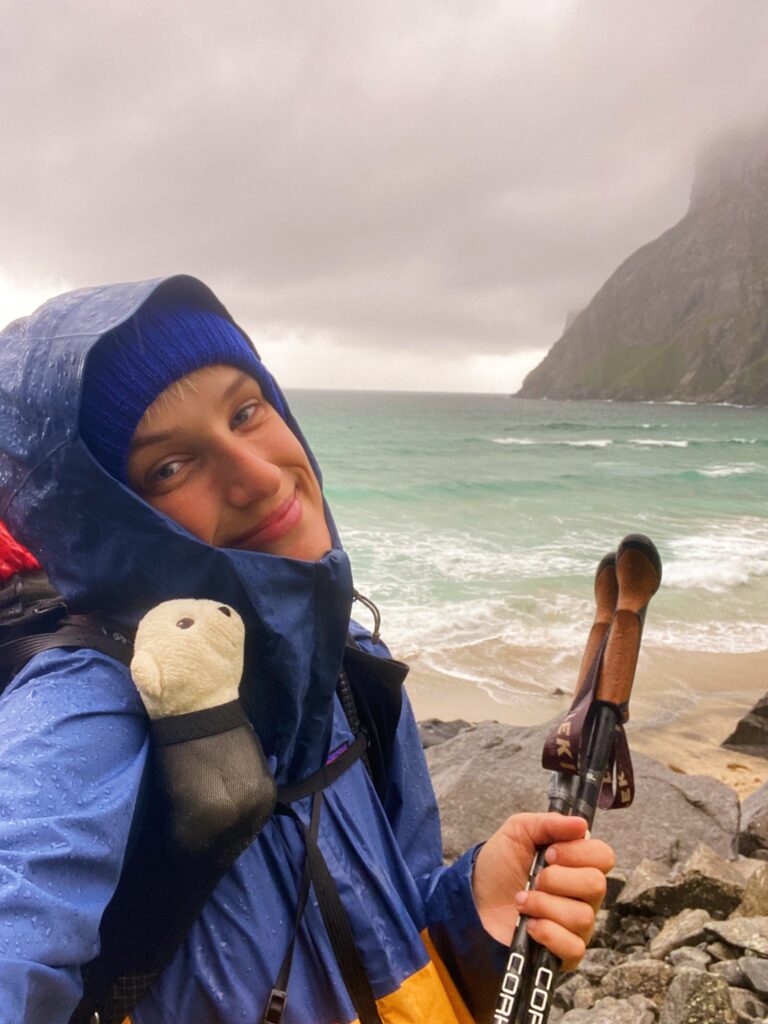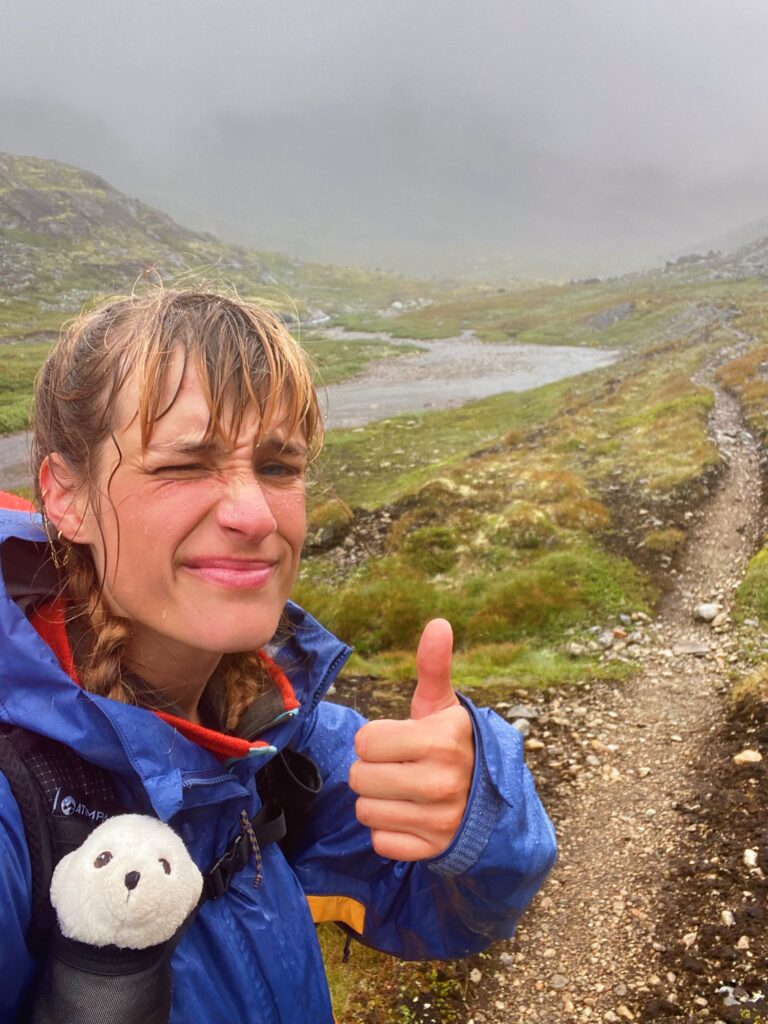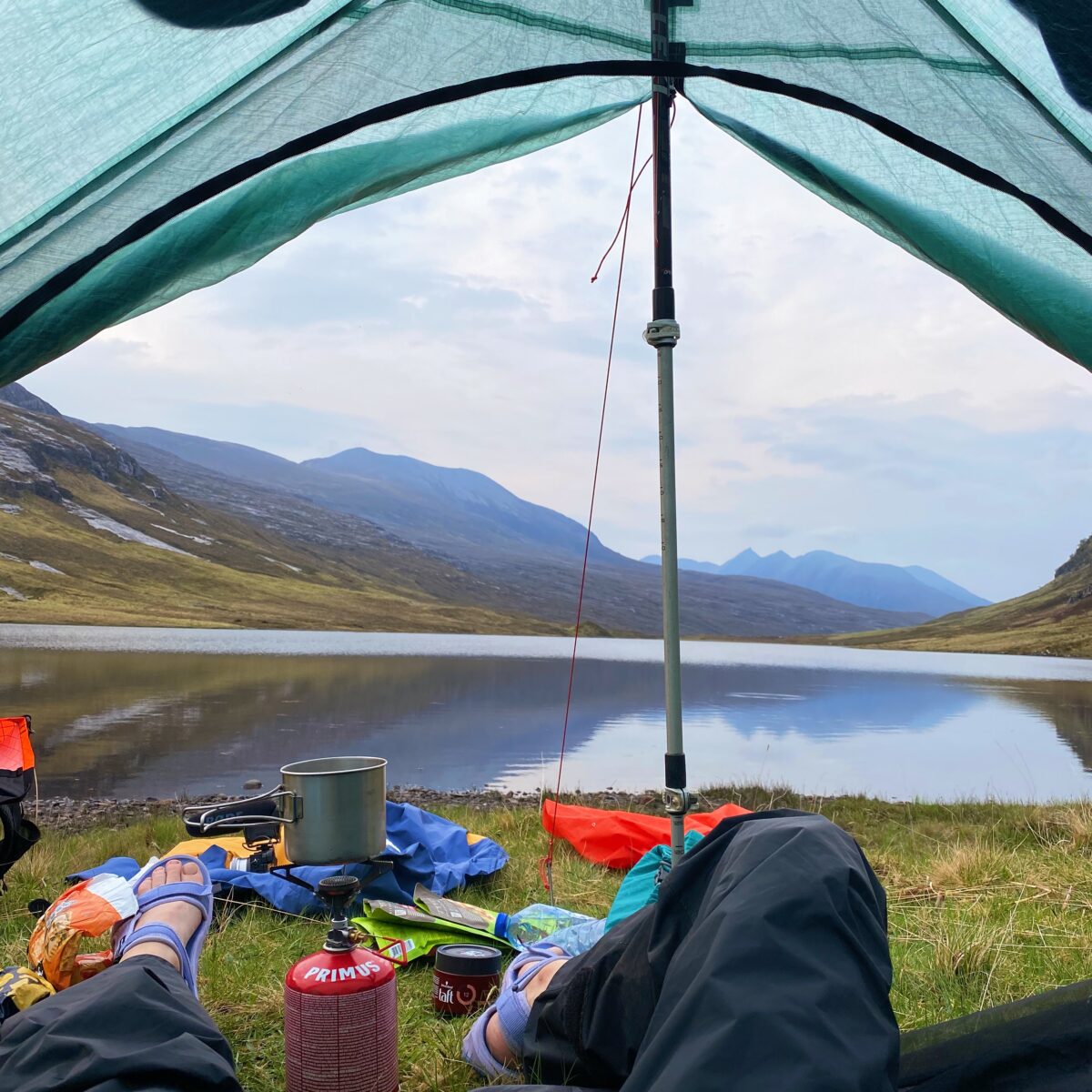
When people ask me questions about hiking, 90% of the time, it’s about gear. It makes sense – having the right gear for the right conditions can completely elevate your experience on the trail. On the flip side, carrying gear that isn’t suited to the weather or terrain can… well, let’s just say it can really put a damper on things. That’s why I’m kicking off a new series here on the blog: ‘How to Choose the Right … for You.’ First up: rain jackets!
When I went shopping for my first outdoor rain jacket years ago, I was overwhelmed by the sheer number of options. Did I want a hardshell or a softshell? What waterproof rating was I supposed to be looking for? Should I splurge on the pricier jacket with pit zippers under the arms? The choices felt endless, and honestly, I was grateful the store staff were so helpful – I wouldn’t have had a clue what to choose without them.
So, let me pass on that knowledge and be your personal shopping assistant today! Let’s take a deep dive into the specs of rain jackets together. Here we go!

Hardshell vs. Softshell
When it comes to rain jackets, there are two main categories: hardshells and softshells. Each has its own pros and cons and is better suited to different types of activities. Let’s break it down.
Hardshell jackets are typically fully waterproof and windproof. They’re designed to handle tough weather conditions and will keep you dry even in a heavy downpour. Many hardshells have membranes that combine waterproofing with decent breathability. The downside? The fabric tends to be stiff, limiting your range of movement. They also tend to have lower breathability compared to softshell jackets.
Softshell jackets, on the other hand, offer much more freedom of movement thanks to their flexible, stretchy fabric. They also provide excellent breathability, so sweat gets wicked away more easily. However, they’re only water- and wind-resistant, so not fully waterproof or windproof. They also tend to be a bit heavier than hardshells.
In comparing the two, it’s fair to say that a hiker setting off on a multi-day trail will likely opt for a hardshell (since they’re bound to face a heavy rainstorm at some point), whereas a trail runner heading out for a quick daily run might prefer a softshell (because they need more freedom of movement and are less likely to encounter extreme weather).
TL;DR: Hardshell vs. Softshell at a glance :
| Hardshell | Softshell |
| Waterproof and windproof | Water- and wind-resistant |
| Lower breathability | High breathability |
| Lightweight | Often heavier |
| Less range of movement | More range of movement |
| Stiff material | Flexible material |
Waterproof Rating (Water Column)
When you’re browsing the specs of rain jackets, you’ll often come across something called the waterproof rating, also known as the water column. This number, expressed in millimeters, might seem a bit abstract at first. So, what does it actually mean?
The waterproof rating is determined in a lab by placing a cylinder on a 1 cm² piece of fabric and gradually filling it with water. The moment one drop of water seeps through the fabric, the height of the water in the cylinder is measured – that’s the water column value.

“Ok, Floor, but how do I make sense of these numbers?” No worries, I’ve got you covered with a quick overview:
– < 5.000 mm: Water-resistant in light rain or snow (think of a short dog walk in unpredictable weather).
– 5.000 mm – 10.000 mm: Waterproof in light rain or snow (ideal for a quick run in mixed conditions).
– 10.000 mm – 15.000 mm: Waterproof in moderate rain or snow (suitable for a day hike with a small pack).
– 15.000 mm – 20.000 mm: Waterproof in heavy rain and wet snow, plus resistant to the pressure of a backpack (great for multi-day hikes with a heavier load).
– > 20.000 mm: Waterproof in extreme rain and wet snow, and can handle the high pressure of a large backpack (perfect for thru-hiking or multi-day treks with a heavy pack).
So, if you’re planning a thru-hike with a backpack, it’s recommended to get a rain jacket with a waterproof rating of at least 20.000 mm. Keep in mind, however, breathability is also key: a Gore-Tex membrane, for example, will be more breathable than a jacket with the same waterproof rating but no Gore-Tex. But more on Gore-Tex later…
Breathability
I briefly touched on ventilation when mentioning Gore-Tex, but it’s truly a crucial factor when choosing a rain jacket. A jacket can be incredibly waterproof, but if it traps all your sweat inside, it’s going to be pretty uncomfortable. One way to improve breathability is by opting for a jacket with a membrane (like Gore-Tex – again, more on that later). Another great option is choosing a jacket with pit zips.
Pit zips are exactly what they sound like: zippers under your armpits that you can open while hiking. This allows sweat to escape directly through the open zippers, while rain (in light showers) won’t seep in, as the zippers are placed on the underside of your arms.
Gore-Tex
Ah, time to address the elephant in the room: the famous “Gore-Tex.” This term pops up left and right in the gear world, but what exactly is it? In short, Gore-Tex is a membrane filled with microscopic holes. These holes are large enough to let water vapor molecules (aka sweat) escape, but too small for water droplets (aka rain) to get through. This makes the jacket both breathable AND waterproof.
However, Gore-Tex isn’t the most eco-friendly material. Luckily, brands like VAUDE have developed their own breathable, waterproof membranes that are environmentally friendly. Double win!

Other Features
When choosing a rain jacket, there are a few other features you might want to consider:
Weight: For the ultralight enthusiasts out there :).
Hood design: Does it still fit over a thick hat? Will it stay in place during heavy winds?
Pockets: If you love pockets, make sure the jacket has them!
Design: For the fashion-conscious hikers :).
Water-resistant zippers: A jacket is only fully waterproof if the zippers are sealed from the inside. An external flap helps, but it’s not a perfect solution.
That’s it! Hopefully, you now have a clearer idea of what to look for when choosing a good rain jacket. Remember, there’s no such thing as the perfect rain jacket—there’s only the perfect rain jacket for you. Think about your plans and the specific needs that come with them. Only then will you find the piece of gear that truly fits you on the trail!
Happy gear hunting!




